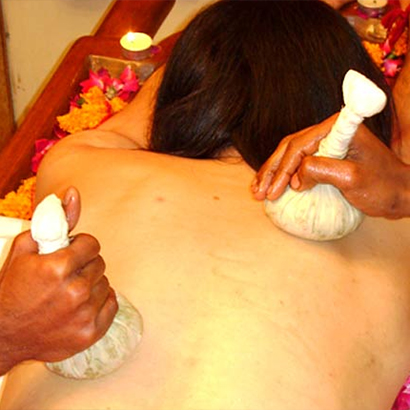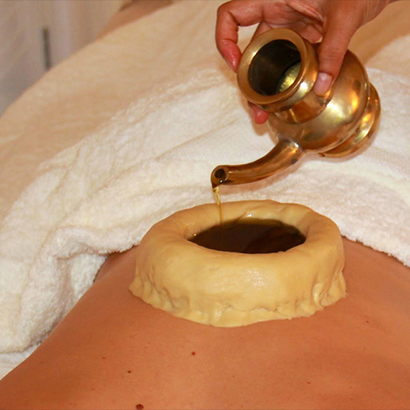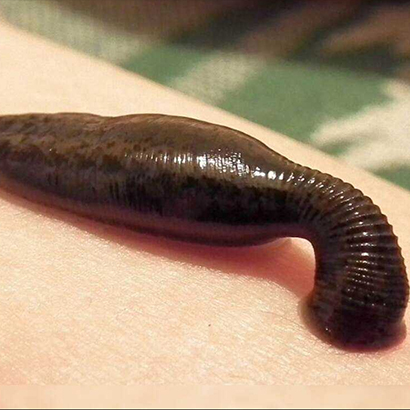Panchakarma
Panchakarma actually is a group of treatments, five in number, all of which are not commonly practised in all diseases. The panchakarma are vamana, virechana, snehavasti, kashayavasti and nasya. Vamana is emesis, virechana is purging, vasti is enema, which of two kinds done with medicated oils and medicated decoctions and is called snehavasti and kashayavasti respectively. Nasya is instillation of medicines through nose.
Panchakarma (which means 5 steps or 5 actions) is a cleansing and rejuvenating program for the body and mind. It is well-known for its beneficial effects on the overall health and sense of well-being of an individual. According to Ayurveda, our natural state is one of health, happiness and an inner sense of well-being. Health is defined as a state where the human body is clear of toxins, the mind is at peace and emotions are calm and happy, our body waste is efficiently eliminated and organs are all functioning normally. In a busy, toxic world, our physical and mental systems accumulate toxins which cause deterioration in the normal functioning of our body. This will eventually weaken our system thus opening the way for the attack of chronic degenerative and non-specific diseases to develop. This will ultimately damage the individual’s health and sense of well-being.
Panchakarma tries to reverse these negative effects of daily living and restore one’s natural state of health and wellness by cleansing the body of toxins, bringing balance to our system and improve bodily function. It also helps to make the necessary positive changes in lifestyle.
The Panchakarma therapeutic process seems very simple but its effects are powerful. This treatment is completely natural and unique. The series of this treatment will cleanse the body of deep tissue toxins, open the necessary channels, bring in a rejuvenation and enhancing sense of well-being thereby increasing vitality, confidence and health.

Vamana - Use Of Emetics
This therapy is mainly used in cases of chronic disorders due to Kapha dosha. It involves induced and controlled vomiting with the help of medicines. It is used to treat chronic asthma, chronic hyperacidity etc. Vamana should not be given to the very young or the very old or during pregnancy and should always be administered under a physician’s supervision

Virechan - Use Of Laxatives
This therapy is mainly used in cases of chronic disorders due to Pitta dosha. It involves induced and controlled purgation with the help of medicines. It is used to treat jaundice, chronic helminthes cases etc. Virechan should not be given to the very young or the very old or during pregnancy and should always be administered under a physician’s supervision.

Vasti - Medicated Enema
Involves administering medicines as enema. The medicines used can be decoctions, pure / formulated oils, milk etc. It is used to cure arthritis, backache etc. Nasya – Nasal administration of medication
Nasya is administered through the nose. Medicated powders, decoctions or oil drops are introduced into the nasal passages. They remove residual doshas and toxins from the head and neck area. Nasya is used in cases of migraine, chronic rhinitis, epilepsy etc.

Rakta Mokshana - Blood Letting
Is done either with the help of venesection, or using leeches. It is mainly used to cure gout, skin and blood disorders (pigmentation), elephantiasis, alopecia. Rakthamokshana is done to remove deep-seated circulating toxins from the blood. It relieves stagnation and congestion in varicose veins. It improves circulation to a specific area, reduces inflammation and improves healing of a specific location along with the entire system in general. Rakta-mokshan should not be given to the very young or the very old or during pregnancy and should always be administered under a physician’s supervision.

